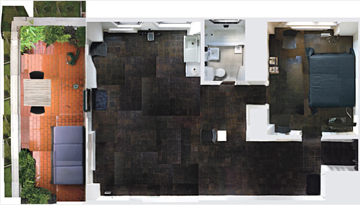It is only a coincidence that the world’s largest franchised art fair and the international banking regulatory body share a moniker from their shared base, Basel, Switzerland, but no coincidence at all that each are currently in a bit of a funk. From Basel to Boston, institutions all over are now contemplating how to function in a financial black hole. Equally funky and oddly inspiring have been the community-based, democratically modeled responses to these crises-induced measures. One such example of this is an online petition to preserve the Rose Art Museum collection. No doubt this action is inspired by such tactics like the one that is lobbying the new Obama administration for a culture czar. How do we really feel about Quincy Jones at the helm of U.S. cultural institutions?
I’m more intrigued by artists’ responses to the increasingly challenging economic conditions—ones that are taking the form of community action groups. It seems that collaborations as community actions are the way forward for artists’ and art mavens’ take on large issues and institutions, even when the goal is individual empowerment. W.A.G.E. is one such feminist art group seeking economic parity for artists’ work.
Democracy in America: W.A.G.E. from Creative Time on Vimeo.
W.A.G.E. was formed well before the global credit crunch. In fact, it developed in the midst of a hyperbolic market where (generally male) artists such as Michael Landy, the Chapman Brothers, and Jeff Koons were parodying the same market forces that were feeding them. When the art world was awash in obscene amounts of cash, W.A.G.E. wondered why more artists weren’t seeing more of it. Granted, this is the complication of peculiar economic relationships in the art world based on buying, selling, and patronage, but not on the basic equation of labor and compensation. And thus the question remains: how do artists make a living from the practice of making art alone without wholly capitulating to market forces?
I have no answers at all to the big economic questions but personally, when things are a bit tight, I like to fall back on the old-school green motto that is both earth-friendly and cost-effective: the 3Rs. Below is an offering of some art projects that exemplify each in principle.
REDUCE
This collage is more of a collaboration between Art21 artist Andrea Zittel and MOMA curator Klaus Biesenbach featured in the latest W magazine. Biesenbach’s austere downtown digs inspired a collage, which adds some visual texture to his monk-like quarters. Granted, this is a design editorial for a luxury-goods magazine but it’s amazing how idealistically anti-consumerist it comes across.

Photographed by Dean Kaufman for "W" magazine.
REUSE
The largest of Phoebe Washburn‘s installations mimic landscapes and the most ambitious ones create their own biosphere.

Phoebe Washburn, "Manning Stay Station," 2005. Installation view.
Yes it’s cool that Washburn goes on walks, collecting discarded materials on her meanderings and then sorts them with her own cataloging system, but it’s even cooler that she retrieves the materials when the installations are dismantled and re-catalogs them for possible use in future projects. Granted, there are all sorts of formal and conceptual issues to tackle in this work and it’s really more about an obsessive practice, but it’s great to think about these practices as self-sustaining systems that form a tacit critique of consumption-based market systems.
RECYCLE
I think it may be high time to reinvigorate The Black Factory, William Pope.L’s peripatetic truck that solicits folks to bring objects they associate with black culture. The Factory’s workers then “convert” those objects into products to be sold.

William Pope.L’s “Black Factory,” 2006, via sokref1 on Flickr.
Perhaps these conversations on race would be interesting to revisit now that Obama is in office but, in a more compelling sense, I like that Pope.L’s art has often been based on the consumption habits of the working class and the poor. No one often thinks of the words “poor” and “consumer” at the same time, but those consumed things make for a material culture that has been fueling art projects for years.
* Lilly Ledbetter is the namesake of the Lilly Ledbetter Fair Pay Act, President Obama’s first official piece of legislation. It expands workers’ rights to sue on the grounds of race, sex, age, and/or disability discrimination.




Pingback: On representations of the artist at work (Part 2) | Art21 Blog
Pingback: Flash Points: Art+Politics, Looking Back & Moving Forward | Art21 Blog
Pingback: What Is To Be Done?* Conversations, Commerce, and Collaborations | Art21 Blog